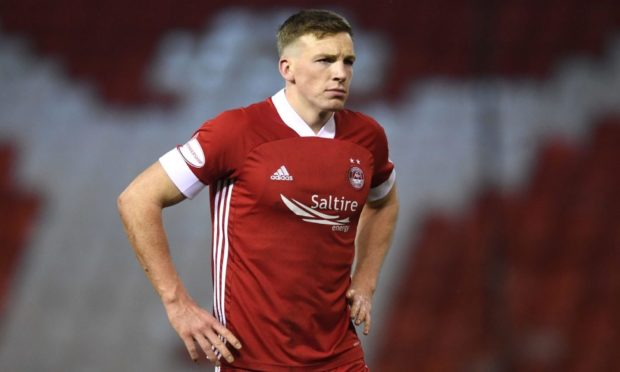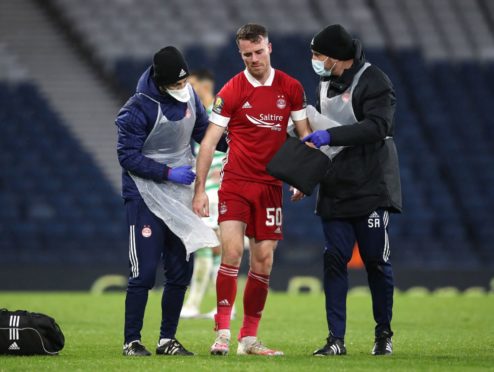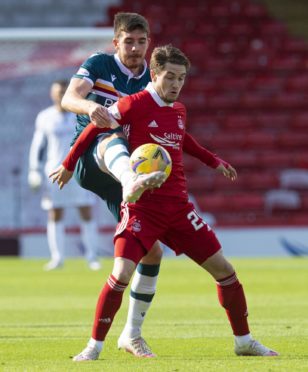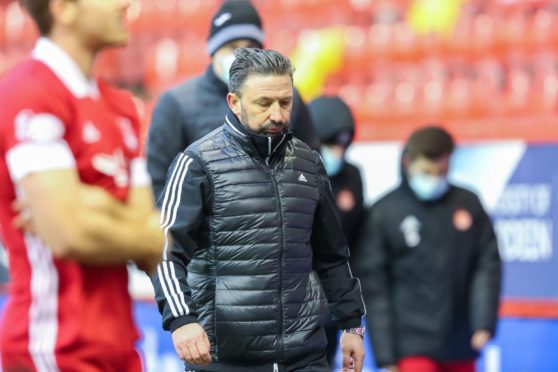When Aberdeen fans think back on the 2020-21 season they will ponder just what went wrong?
That question is going to be a tough one to answer but we’ll try our best. Pinpointing where it started to go wrong, however, is there in black and white.
When Lewis Ferguson fired home an injury time equaliser from the penalty spot at the end of a thrilling 3-3 draw against Celtic at Pittodrie on October 25 the feeling was that this Dons team had the ingredients needed to go and do something special this season.
The result kept Aberdeen within three points of the second-placed Hoops and a point behind Hibernian, who had played a game more than the Dons’ 11 matches.
Coming a week before the semi-final of the 2020 Scottish Cup semi-final, which had been delayed due to Covid, Aberdeen fans were daring to dream their side could go one better and beat Celtic at Hampden a week later and end their dominance of Scottish football.
That dream turned sour at the national stadium a week later as Celtic cruised to a 2-0 victory as they booked their place in a final against Hearts which they would ultimately go on to win and record a quadruple treble.
For Celtic, history beckoned. For Aberdeen it was an eighth consecutive Hampden loss to the Hoops stretching back to 1992 and the loss of Marley Watkins to a hamstring injury which ended his brief but impressive loan at Pittodrie had, in hindsight, a huge impact.
The arrival of Watkins from Bristol City as a striker raised a few eyebrows among those who had worked with him as few regarded him as an old fashioned number nine.
But what Watkins did offer was boundless energy, clever link-up play and a serious creative threat in the final third.
He had slotted in perfectly into the McInnes team and was a key cog in some of Aberdeen’s best attacking play in seasons. The irony that no fans were able to watch it in person was not lost on this writer.
Aberdeen beat Hibs at Pittodrie comfortably in their first game after the semi-final but the attacking thrust of September and October slowly began to wane and by the time 2021 came round the Dons were in need of fresh impetus.
Scott Wright, who had missed most all of December, made his return in the goalless draw with Dundee United on January 2 but he would not be back in the red of Aberdeen for long.
A month later he would be wearing the blue of Rangers after moving to Ibrox while Sam Cosgrove was sold to Birmingham City, Watkins returned to Bristol, Bruce Anderson joined Hamilton Accies on loan and Curtis Main left to join Shrewsbury Town.
Their departure left Ryan Hedges, who had been so influential in tandem with Wright and Watkins, as the main creative outlet and with three new loan strikers on board in Fraser Hornby, Callum Hendry and Florian Kamberi, the Dons were in the middle of a mid-season revamp.
The loss of Hedges the day after the transfer window closed in a home loss to Livingston on February 2 had plunged Aberdeen deep into the mire.
On reflection, McInnes has to take action. His side had lost all momentum and cutting edge and the run of one goal in 10 games from January to March ultimately brought the manager’s eight years at Pittodrie to an end.
McInnes has admitted a parting of the ways was coming at the end of the campaign whatever the outcome but his departure felt like the end of an era in more ways than one.
The arrival of Stephen Glass as his successor must be the winner of the least surprising development of the season.
It’s wrong to say it was an open secret but given the club’s strategic partnership with Atlanta United, Glass’ links with the Dons and the fact he and chairman Dave Cormack knew each other, fans and media all put two and two together to come up with four in the management hunt and we were all right.
Glass’ return to Pittodrie is very much in its infancy and it would be harsh in the extreme to make any judgement or prediction based on his six games in charge.
But finding that special recipe in the final third will be the key to the Dons not only getting back to showing the potential they had three months into this season but actually realising it.



